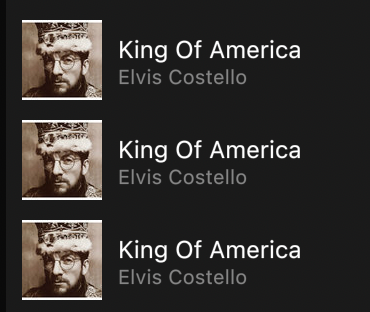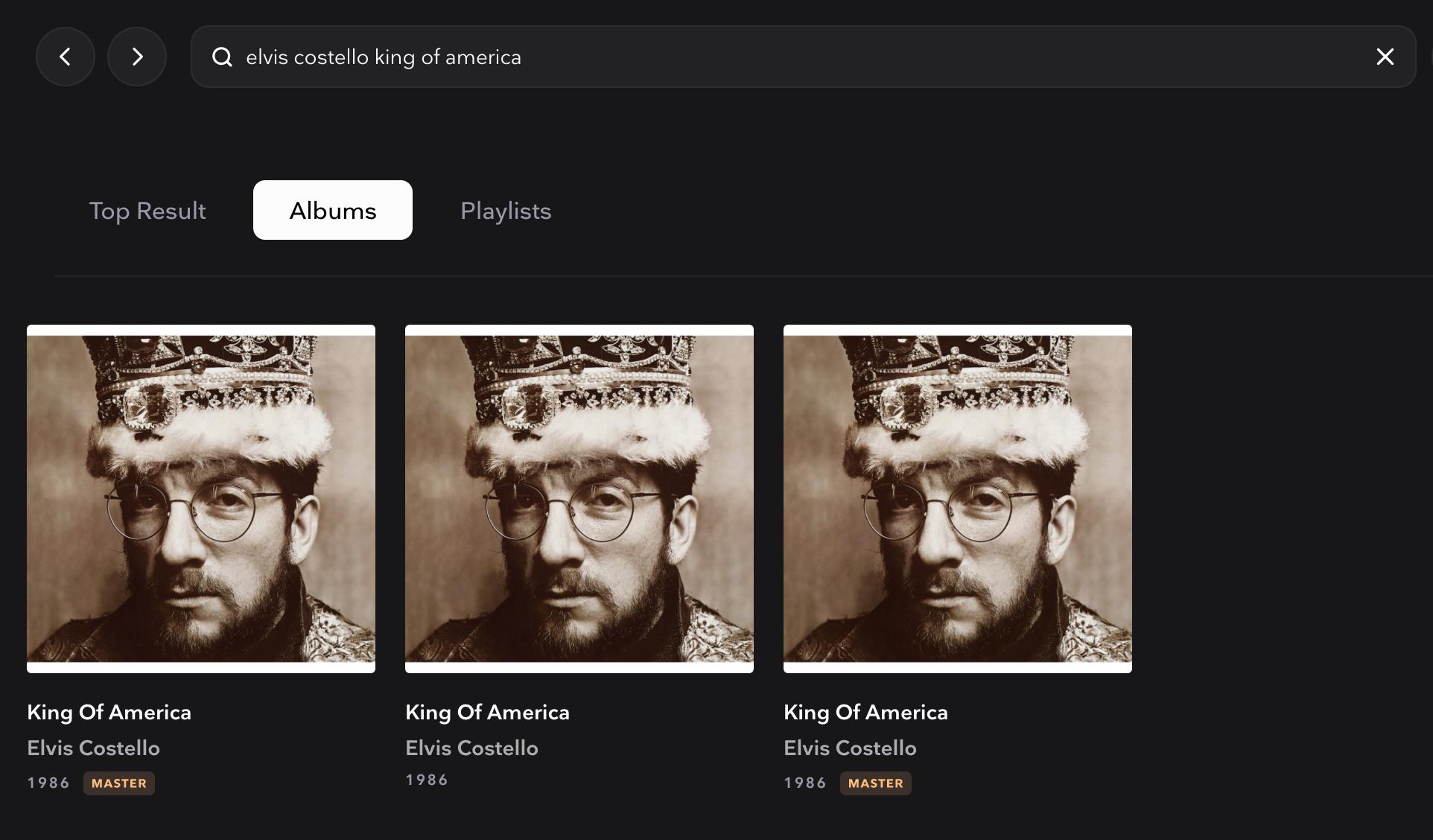I see this question was posted over a year ago, but no one seemed to know the answer (unless I missed it?). So I figured I’d ask again! As an example, if I go into the Tidal Android app or the Tidal desktop app and look up Elvis Costello’s King of America, it is listed exactly one time. But in the Sonos app, it lists three times, and each one looks identical:

Clicking on them, there is no difference in track listing. On Tidal, this album is listed as “Master” quality. So one possibility is that Tidal, behind the scenes, has three different steam types available for this same album. Perhaps, that’s why Sonos shows it like it is three different albums? Maybe each one sound a bit different? I’m curious if Sonos or Tidal has addressed why this is happening. (I realize this is probably Tidal’s issue, but since it makes it harder to use Sonos, it would be great if Sonos could pressure Tidal to fix -- or at least tell us what is broken so that Tidal users like myself could approach Tidal to fix!). Thanks.


